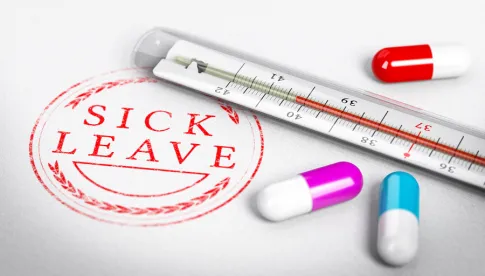“Caution is appropriate. Preparedness is appropriate. Panic is not.” ~ U.S. Surgeon General Dr. Jerome Adams, commenting on the coronavirus outbreak
As the coronavirus outbreak continues to wreak havoc on markets and industries in the U.S. and around the world, businesses are now confronting significant and unique challenges. Successful navigation of these challenges will require thoughtful and comprehensive planning. Chief among those challenges is the prospect of new legal requirements for employers during this challenging time. For more detailed information on the employment provisions, click here.
H.R. 6201 Families First Coronavirus Response Act
Among possible new legal requirements for businesses are the provisions of H.R.6201 titled the Families First Coronavirus Response Act (the “Act”), which the United States House of Representatives passed on March 13, 2020. This bill is one of what appears will be a number of pieces of federal legislation coming from Washington designed to deal with the unprecedented events triggered by the outbreak of COVID-19. Readers must understand that the bill passed on Friday is not yet law and still requires passage by the Senate and signature by the President. The Senate is scheduled to take up the bill this on Monday afternoon March 16, 2020. Until the Senate passes the bill and any changes are reconciled with the H.R. 6201, and the President signs it, it could be changed or modified significantly.
Furthermore, Speaker of the House Nancy Pelosi and Treasury Secretary Steven Mnuchin have stated H.R. 6201 will likely need technical corrections. Below is a summary of key provisions of the Act; provisions applicable to privately held companies are highlighted in red.
Top 10 Summary Points:
1. House Bill H.R. 6201 is the Congressional response to the coronavirus (i.e., SARS-CoV-2 or COVID-19) outbreak. The House passed the bill in the early morning hours of March 14, 2020, with bipartisan support (363-40-1). It will become law upon being passed by the Senate, which is expected the week of March 16, 2020.
2. President Trump has indicated his support for the bill and encouraged its prompt passage into law
3. Paid sick and family leave, free COVID-19 testing, expanded food assistance and unemployment benefits, and additional protections for health care workers
4. Supplemental appropriations for:
a. The Department of Agriculture (USDA) for nutrition and food assistance programs
b. The Department of Defense for health service programs
c. The Internal Revenue Service for provision of taxpayer services
d. The Department of Indian Affairs for health service programs
e. Health and Human Services for nutrition programs, implementation of sick-pay and family pay leave programs, and programs that assist the elderly
f. Department of Veterans Affairs for medical services [H.R. 6201, Div. A]
5. Modifies USDA food assistance and nutrition programs to:
a. Allow certain waivers to requirements for the school and adult-care food programs
b. Allow states to request waivers to provide certain emergency SNAP benefits. [H.R. 6201, Div. B]
6. Establishes a federal emergency paid leave benefits program to provide payments to employees taking leave due to the coronavirus outbreak [H.R. 6201, Div. C]
7. Expands unemployment benefits and provide grants to states for processing and paying claims [H.R. 6201, Div. D]
8. Requires employers to provide Emergency Paid Sick leave to employees [H.R. 6201, Div. E]
9. Establishes requirements for providing coronavirus diagnostic testing and related visits at no cost to consumers, including full coverage for COVID-19 testing visits by private healthcare plans [H.R. 6201, Div. F]
10. Creates dollar-for-dollar old age, survivors and disability insurance [I.R.C. Sec. 3111(a)] tax credits for Paid Sick and Paid Family Medical Leave; credits are subject to caps
Summary of Key Provisions:
A. Division A - Second Coronavirus Preparedness and Response Supplemental Appropriations Act, 2020 (Immediate applicability to private companies not evident)
1. Title I – Food and Nutrition Services, Special Supplemental Nutrition Program for Women, Infants and Children (WIC)
i. Providing for an additional $500,000,000 for WIC
ii. Providing for an additional $400,000,000 for the Commodity Assistance Program
iii. In any case in which a school is closed for at least 5 consecutive days during a public health emergency designation during which school would otherwise be in session, each household containing an “eligible child” (one who is eligible for free or reduced price school meals) attending the school shall be eligible to receive assistance pursuant to a state agency plan
iv. The Secretary of Agriculture may purchase commodities for emergency distribution in any area of the United States during a public health emergency declaration
2. Title II – Instruction to Department Defense
i. Providing for an additional $82,000,000 to administer COVID-19 related health services.
3. Title III – Internal Revenue Service Taxpayer Services
i. Providing for $15,000,000 to carry out the Act
4. Title IV – Indian Health Services
i. Providing for $64,000,000 for Indian Health Services
5. Title V – Administration for Community Living Aging and Disability Services Programs
i. Providing for $250,000,000 for Aging and Disability Services Programs, of which $160,000,000 shall be for Home-Delivered Nutrition Services, $80,000,000 for Congregate Nutrition Services, and $10,000,000 for Nutrition Services for Native Americans
ii. Providing for $1,000,000,000 for Public Health and Social Services Emergency Funds in coordination with CMS to pay for claims of providers for reimbursement for health services relating to COVID-19 or certain visits for uninsured individuals
6. Title VI – Veterans Health Administration Medical Services
i. Providing for $30,000,000 for Medical Services relating to COVID-19
ii. Providing for $30,000,000 for Medical Community Care relating to COVID-19
7. Title VII – General Provisions
B. Division B – Nutrition Waivers (Immediate applicability to private companies not evident)
1. Title I – Maintaining Essential Access to Lunch for Students (MEALS) Act
i. Provides for states to obtain waivers to school lunch requirements for purposes of providing meals and meal supplements during school closure due to COVID-19
2. Title II – COVID-19 Child Nutrition Response Act
i. Providing for waivers to school lunch and adult care food program requirements, including to allow non-congregate feeding and exceptions to meal patterns if necessary to provide meals or due to supply chain disruption
3. Title III – SNAP COVID-19 Response Waivers
i. Providing for certain increased eligibility for supplemental nutrition assistance program benefits
ii. Providing for emergency allotments to households participating in SNAP to address temporary food needs
C. Division C – Emergency Family and Medical Leave Expansion Act (Applicable to private companies)
1. Expands the coverage of the Family and Medical Leave Act (“FMLA”) in its various definitions
2. An “eligible employee” means an employee who has been employed for at least 30 calendar days by the employer with respect to whom leave is requested
3. The “employer threshold” includes those employers with “fewer than 500 employees”
4. A “qualifying need related to a public health emergency” means that an employee has need for leave for one of the following reasons:
i. To comply with a recommendation or order by a public official or health care provider that physical presence of the employee on the job would jeopardize the health of others because of exposure to the virus or symptoms, and the employee is not able to both perform the functions of the position and comply with the order
ii. To care for a family member who has been exposed or has symptoms, or to care for a child under 18 if the school or place of care has been closed or child care provider is unavailable due to the public health emergency
5. The first 14 days for which an employee takes leave under this section may consist of unpaid leave, but the employee may substitute vacation, personal or sick leave
6. Employer must provide paid leave for each day of leave that an employee takes after taking leave for 14 days
7. Benefit amount equals two-thirds of the employee’s regular rate of pay for the number of hours the employee would otherwise be normally scheduled to work
i. For employees with variable hours, look at the number equal to the average number of hours worked over a 6-month period
8. An employer signatory to a multi-employer collective bargaining agreement may fulfill its obligations by making contributions to the fund based on the paid leave each of its employees is entitled to under the agreement
D. Division D – Emergency Unemployment Insurance Stabilization and Access Act of 2020 (Ancillary applicability to private companies, as will set up work-sharing programs, technical assistance related to unemployment insurance programs through the states; no immediate company actions necessary based on bill provisions)
1. Allocates $1,000,000,000 in emergency grants for states for activities related to the administration and continued operation of Unemployment Insurance (“UI”) Programs
2. Provides Emergency Transfers for Unemployment Compensation Administration, access to interest-free loans to help pay regular UI benefits through December 31, 2020, and technical assistance to states that want to set up work-sharing programs, in which employers reduce hours instead of laying employees off
3. For states that experience an increase of 10 percent or more in their unemployment rate (over the previous year) and comply with all the beneficiary access provisions, provides 100 percent federal funding for Extended Benefits, which normally require 50 percent of funding to come from states
E. Division E – Emergency Paid Sick Leave Act (Applicable to private companies)
1. An employer shall provide an employee with paid sick time for any of the following uses:
i. To self-isolate because the employee is diagnosed with coronavirus
ii. To obtain a medical diagnosis upon experiencing symptoms of coronavirus
iii. To comply with recommendation or order by a public official or health care provider because the physical presence of the employee would jeopardize the health of others because of exposure to coronavirus or exhibition of symptoms
iv. To care for or assist a family member who is self-isolating because of diagnosis, experiencing symptoms, or who is subject to an order that the presence of that person in the community would jeopardize the health of others due to exposure to the coronavirus or symptoms
v. To care for the child of an employee if school or place of care is closed due to coronavirus
2. Full-time employees are entitled to 80 hours of paid sick time
3. Part-time employees are entitled to the number of hours that such employee works on average over a 2-week period
4. There is no carryover of this sick time from 1 year to the next
5. This paid sick leave is in addition to any paid sick leave already offered by an employer
6. An employer may not require that the employee search for or find a replacement employee to cover the hours in which the employee is using paid sick time
7. Paid sick time is available regardless of how long the employee has been employed by an employer
8. An employer may not require an employee to use other paid leave before using the paid sick time
9. Each employer is required to post a notice, to be provided by the Secretary of Labor
10. Employers are prohibited from discharging or disciplining an employee who takes a leave in accordance with the Act
11. Employers who are signatories to multi-employer collective bargaining agreements may fulfill its obligations by making contributions to the fund, plan or program based on the hours of paid sick time each of its employees is entitled
12. An “Employer” under this provision is
i. in the case of a private entity or individual, one that employs fewer than 500 employees
ii. in the case of a public agency or other entity not private, employs 1 or more employees
F. Division F – Health Provisions (Applicable to private healthcare plans)
1. Establishes requirements for providing coronavirus diagnostic testing at no cost to consumers
2. Private healthcare plans required to provide no-cost coverage for COVID-19 diagnostic testing, including the cost of a provider, urgent care center or emergency room visit in order to receive testing
3. Waives Medicare, Medicare Advantage, Medicaid and CHIP cost-sharing requirements for COVID-19 visits
4. Treats personal respiratory protective devices as covered countermeasures that are eligible for certain liability protections
5. Temporarily increases the Medicaid federal medical assistance percentage (“FMAP”)
G. Division G – Tax Credits for Paid Sick and Paid Family and Medical Leave (Applicable to private companies)
1. For employers, there shall be allowed as a credit against the tax imposed under IRC 3111(a) an amount equal to 100% of the qualified sick leave wages paid by such employer
i. The credit is subject to caps on the qualified sick leave wages (ranging from $200 to $511 per day) and aggregate number of days to be taken into account
ii. The credit shall not exceed the tax imposed
2. In the case of a self-employed individual, there shall be allowed a tax credit against the tax imposed by IRC Subtitle A in an amount equal to 100% of the qualified sick leave equivalent with respect to the individual
3. For employers, there shall be allowed as a credit against the tax imposed under IRS 3111(a) an amount equal to 100% of the qualified family leave wages paid by such employer
i. The credit is subject to caps, such that it may not exceed $200 per day per individual and, in the aggregate with respect to all quarters, $10,000
ii. The credit shall not exceed the tax imposed
4. In the case of a self-employed individual, there shall be allowed a tax credit against the tax imposed by IRC Subtitle A in an amount equal to 100% of the qualified family leave equivalent amount with respect to the individual
5. Any wages required to be paid by reason of the Emergency Paid Sick Leave Act and the Emergency Family and Medical Leave Expansion Act shall not be considered wages for purposes of IRC 3111(a)
H. Division H – Budgetary Effects (Not applicable to private companies)
1. Discussion of how budgetary effects are to be counted and estimated under applicable provisions of existing Acts





 />i
/>i

